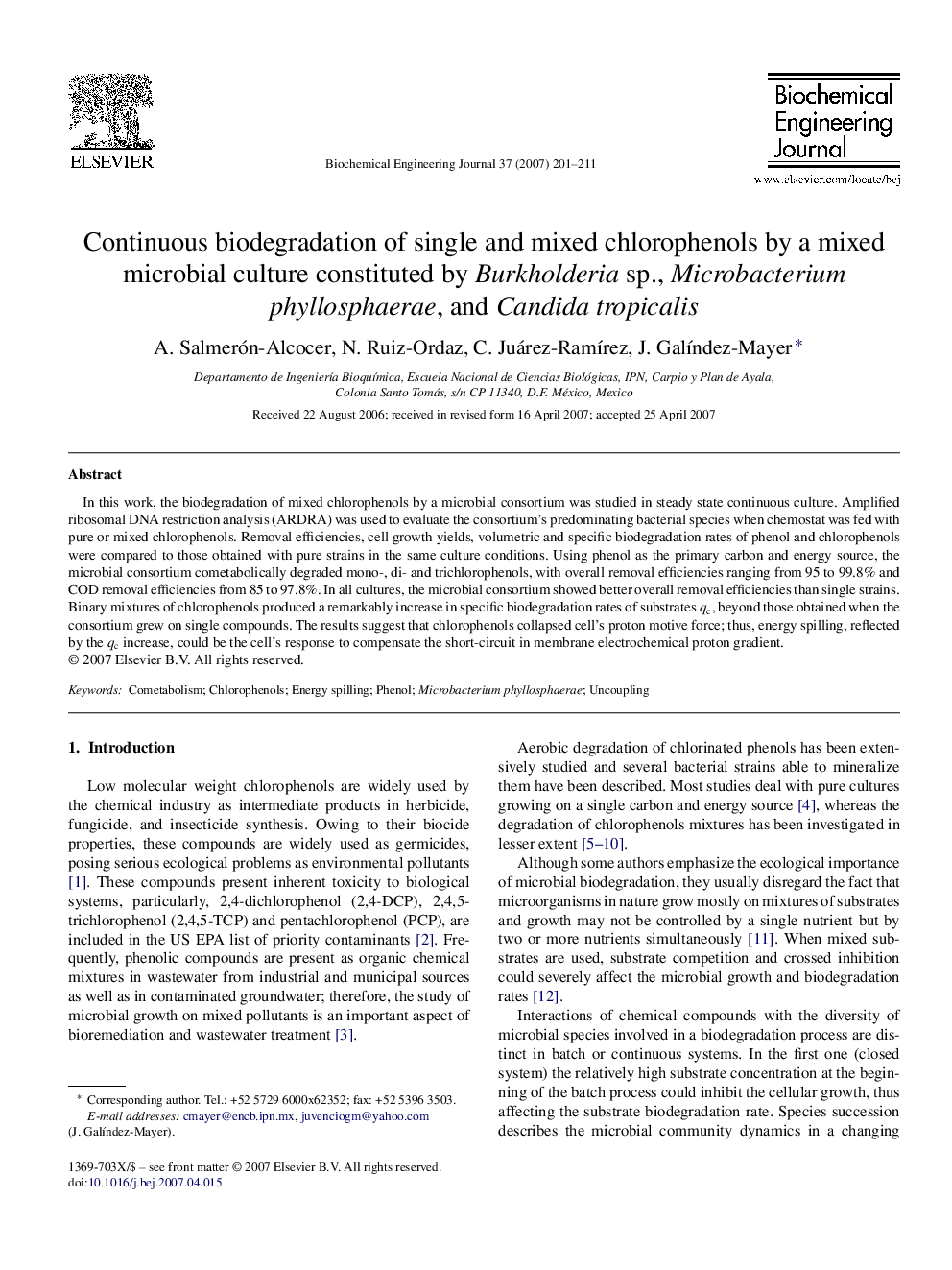| Article ID | Journal | Published Year | Pages | File Type |
|---|---|---|---|---|
| 4728 | Biochemical Engineering Journal | 2007 | 11 Pages |
In this work, the biodegradation of mixed chlorophenols by a microbial consortium was studied in steady state continuous culture. Amplified ribosomal DNA restriction analysis (ARDRA) was used to evaluate the consortium's predominating bacterial species when chemostat was fed with pure or mixed chlorophenols. Removal efficiencies, cell growth yields, volumetric and specific biodegradation rates of phenol and chlorophenols were compared to those obtained with pure strains in the same culture conditions. Using phenol as the primary carbon and energy source, the microbial consortium cometabolically degraded mono-, di- and trichlorophenols, with overall removal efficiencies ranging from 95 to 99.8% and COD removal efficiencies from 85 to 97.8%. In all cultures, the microbial consortium showed better overall removal efficiencies than single strains. Binary mixtures of chlorophenols produced a remarkably increase in specific biodegradation rates of substrates qc, beyond those obtained when the consortium grew on single compounds. The results suggest that chlorophenols collapsed cell's proton motive force; thus, energy spilling, reflected by the qc increase, could be the cell's response to compensate the short-circuit in membrane electrochemical proton gradient.
